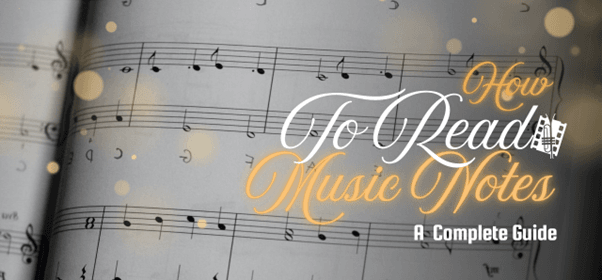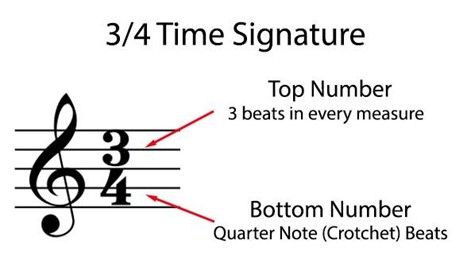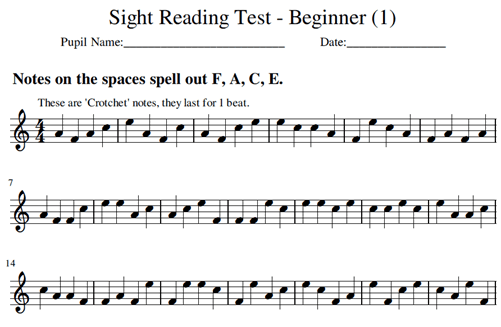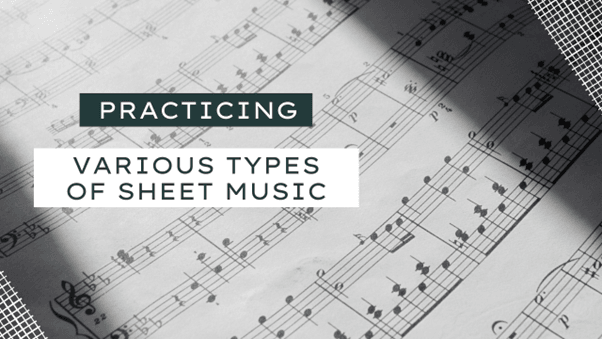Learning how to read music notes seems challenging; however, it is a nice journey into the language of music. If someone wants to read piano sheet music or other forms, it breaks it down in easy steps. Here are some facts about music notes:
The basic music note is a symbol which tells us which sound to play and for how long. These notes are the basic form of all sheet music and include both pitches, the note's height or depth, and rhythm, the tempo in which it is to be played.
What is Music Note?

Step 1: Getting Familiar with the Basics of the Music Staff
So, we start with the staff: the five lines on which to base our understanding of reading sheet music. Lines and spaces in this staff form different musical notes. Here's how it works:
Treble Clef: In the piano version, this clef has notes for the right hand most of the time. On the lines from bottom to top, the notes are E, G, B, D, and F (just remember this sentence: Every Good Boy Does Fine).
Bass Clef: In piano versions, these usually belong to the left hand. The bass clef goes in a line from bottom upwards, showing G, B, D, F, and A—just like saying "Good Boys Do Fine Always."
The notes in every clef have their own too, and it's good to memorize those.

Step 2: Learn Note Values and Rhythm
When you are learning how to read musical notes, it is essential to know the timing. Notes vary in shape according to their duration: ● Whole Note: 4 beats, an open circle. ● Half Note: 2 beats, an open circle with a stem. ● Quarter Note: 1 beat, a filled-in circle with a stem. ● Eighth Note: ½ beat, a filled-in circle with a stem and a single flag.
These values are important when you are learning how to read sheet music correctly.
Step 3: Identify Common Symbols in Sheet Music
Sheet music has more symbols, so let's go over a few that show up often:
Time Signature: You find it at the start, which indicates the rhythm (for example, 4/4, meaning four beats per measure).
Some of the important symbols indicate which is the "home" note or key. For instance, C major (no sharps or flats) or G major (1 sharp).
Rest Symbols: These are symbols showing when to not play. For example, a quarter rest indicates 1 beat of silence. Each one of these symbols is part of learning how to read sheet music and teaches you to understand both the rhythm and tone.
Step 4: Reading the Notes on Piano Sheet Music
Both on the treble and bass clefs, you will see these notes if you're learning to read piano sheet music. The grand staff is used for piano and combines these two clefs-one placed above the other. This should help you quickly remember: the middle C is located between the two clefs, which you will use often when playing the piano as a guiding landmark. ● Right Hand on Treble Clef: Play the notes as they appear higher up the staff. ● Left Hand on Bass Clef: Use your left hand to play these lower notes. ● This information is critical for how to read piano sheet music properly.
Step 5: Simple Songs Practice
Start with a few basic rhythm songs and melodies which have fewer notes. Most newcomers master reading notes without much difficulty through tries with the song "Twinkle, Twinkle, Little Star." Look for patterns within the notes as well as rhythms as you play. Reading sheet music is quite like learning a language. The more you practice, the more fluent you will become.
Step 6: Use Sight-Reading Techniques
Sight-reading is playing the music without having practised it beforehand from sheet music. The following are some guidelines to help you in this area: Scan the Music: Scan over the piece before attempting to play it and identify particularly tricky parts. Count the Rhythm: Count out the rhythm by tapping along to get a feel for where you'll be in terms of timing. Play Slow: Play it much slower than tempo and gradually increase the tempo as you continue playing.
The preparation to sight-read entails learning to read sheet music more fluently.

Step 7: Using Mnemonics to Remember Note Positions
Mnemonics can help with reading sheet music. Recall that the acrostic FACE will fill in the spaces of the treble clef (F, A, C, E). For the bass clef, write out the sequence of words All Cows Eat Grass to remember the names of the spaces (A, C, E, G). Mnemonics like these make reading much easier.
Step 8: Practice with Various Sheet Music regularly
Get used to how to read music notes by practising through various types of sheet music. Try classical compositions for some structure, and pop songs for a more fun twist. Each type of sheet music helps you better recognise notes and rhythms.

Conclusion
Reading music opens a whole new world of musical expression. By following these steps and practising, you will learn how to read music notes with no problem at all. Use these basics and develop your skills with different sheet music styles. Next thing you know, you'll be reading piano or any other kind of sheet music in your head.
Happy learning!
Frequently Asked Questions When Reading Music Notes
1. Is it difficult to learn how to read music notes? No, it is possible if you get into the practice habit. Start with slow practice, mnemonic device and take it one step at a time.
2. How to read piano sheet music faster? Sight reading needs to be done once a week. Start off with slower songs first and then start challenging yourself by choosing harder rhythms.
3. What is the difference between the treble and bass clefs? The treble clef is for higher pitches, right-hand piano. The bass clef is for the lower pitches, left-hand piano.
4. Do I have to know music theory to read sheet music? Knowing some basic music theory would be very helpful, especially when it comes to reading about timing and key signatures.



